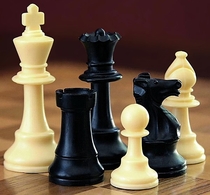
Cheerleading
Cheerleading is an activity in which the participants (called cheerleaders) cheer for their team as a form of encouragement. It can range from chanting slogans to intense physical activity. It can be performed to motivate sports teams, to entertain the audience, or for competition. Cheerleading routines typically range anywhere from one to three minutes, and contain components of tumbling, dance, jumps, cheers, and stunting. Modern cheerleading is very closely associated with American football and basketball. Sports such as association football (soccer), ice hockey, volleyball, baseball, and wrestling will sometimes sponsor cheerleading squads. The ICC Twenty20 Cricket World Cup in South Africa in 2007 was the first international cricket event to have cheerleaders. The Florida Marlins were the first Major League Baseball team to have a cheerleading team. Cheerleading originated as an all-male activity in the United States, and remains predominantly in America, with an estimated 3.85 million participants as of 2017. The global presentation of cheerleading was led by the 1997 broadcast of ESPN's International cheerleading competition, and the worldwide release of the 2000 film Bring It On. The International Cheer Union (ICU) now claims 116 member nations with an estimated 7.5 million participants worldwide. The sport has gained a lot of traction in Australia, Canada, Mexico, China, Colombia, Finland, France, Germany, Japan, the Netherlands, New Zealand, and the United Kingdom with popularity continuing to grow as sport leaders pursue Olympic status. Cheerleading carries the highest rate of catastrophic injuries to female athletes in sports, with most injuries associated with stunting, also known as pyramids.
Смотреть все
1
0

Chess
Chess is a board game between two players. It is sometimes called international chess or Western chess to distinguish it from related games, such as xiangqi (Chinese chess) and shogi (Japanese chess). The recorded history of chess goes back at least to the emergence of a similar game, chaturanga, in seventh-century India. The rules of chess as we know them today emerged in Europe at the end of the 15th century, with standardization and universal acceptance by the end of the 19th century. Today, chess is one of the world's most popular games, played by millions of people worldwide. Chess is an abstract strategy game and involves no hidden information. It is played on a chessboard with 64 squares arranged in an eight-by-eight grid. At the start, each player controls sixteen pieces: one king, one queen, two rooks, two bishops, two knights, and eight pawns. The player controlling the white pieces moves first, followed by the player controlling the black pieces. The object of the game is to checkmate the opponent's king, whereby the king is under immediate attack (in "check") and there is no way for it to escape. There are also several ways a game can end in a draw. Organized chess arose in the 19th century. Chess competition today is governed internationally by FIDE (the International Chess Federation). The first universally recognized World Chess Champion, Wilhelm Steinitz, claimed his title in 1886; Magnus Carlsen is the current World Champion. A huge body of chess theory has developed since the game's inception. Aspects of art are found in chess composition, and chess in its turn influenced Western culture and art, and has connections with other fields such as mathematics, computer science, and psychology. One of the goals of early computer scientists was to create a chess-playing machine. In 1997, Deep Blue became the first computer to beat the reigning World Champion in a match when it defeated Garry Kasparov. Today's chess engines are significantly stronger than the best human players and have deeply influenced the development of chess theory.
Смотреть все
1
0







Комментарии